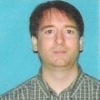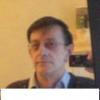Alphabetical Index for Telomerase Activators under Investigation [> Telomerase Inhibitors] 2OR,25S-epoxy-3β,16β,25-trihydroxy-9β-methyl-19-norlanost-1,5-diene (6f).
5-azacytidine (22). (DANGER: may promote prostate carcinomas).
26-deoxyactein (key Black Cohosh (18) extract saponin) Acacia Bark Extract (133) (
Product B,
List) lengthens fibroblast telomeres.
Acetyl L-Carnitine (via NGF) (109).
Akt protein kinase (58), phosphorylates hTERT, upregulated by
resveratrol &
Sphingosine-1-Phosphate.
Amphiregulin (112), EGF family member, via MAP Kinase pathway, candidate.
Androgens can activate telomerase, perhaps after conversion into estrogens (64) [
Forskolin].
Angiotensin II (82). Anti-CD3 monoclonal antibody (mAb) (50).Antigenic stimulation activates telomerase in T-cells (48). Antisense oligode-oxyribonucleotides (ODNs) against Bcr-Abl/c-Abl mRNA (61). Anthraquinone, New Symmetrical Bis-Substituted Derivatives of, (98). AP-1 transcription factor activator protein (125).
AP-2 (Activating Enhancer-binding Protein-2) (89).
Arginine (130), by upregulating
Nitric Oxide and
HGH.
Arsenic, a poisonous tumor promoter, also elevates hTERT levels (63) Inhibits telomerase.
Asian Ginseng Root Extract (135) (
Product B,
List) (
Panax Ginseng) lengthens fibroblast telomeres.
Astragalus Root (6_) [
Index],
Astragalus Root Extract (6_) [
Index],
Astragaloside IV (6c).
Astragaloside IV 16-one (6e).
Astragenol (6e).
Astraverrucins (126).
Bacopa (124). (136) Bacopa Extract (
Product B,
List) lengthens fibrobast telomeres.
Bcl-2 (75).
Ben Gurion University on the Negev, (99) Novel Telomerase Activators developed at.
Berberine Rhizome Extract (137) (
Coptis Chinensis) (
Product B,
List) lengthens fibrobast telomeres.
Betacellulin (114), EGF family member, via MAP Kinase pathway, candidate.
Beta ecdysterone (20-hydroxyecdysone) (54). [Not known to be telomerase activator.] Bisphenol A (BPA) (11). Black Cohosh (18). C. racemosa (black cohosh) extracts (26-deoxyacetein) and other Cimicifuga family extracts.
Black Tea Extract (138) (
Camellia sinensis) (
Product B,
List) lengthens fibrobast telomeres.
Bmi-1 protein (66). (Dangerously associated with the breast cancer Bmi-1 oncogene.)
Boswellia Fruit Extract (139) (
Boswellia serrata) (
Product B,
List) lengthens fibrobast telomeres.
C3-(L)-isoleucyl-cycloastragenol (100.4), the most enhanced-bioavailability Geron telomerase activator.
4 C3-(L)-valyl-cycloastragenol (100.3), experimental Geron telomerase activator (Nov 18, 2010).
C-Abl tyrosine kinase (91), phosphorylates hTERT. Ca ionophore (51) . Carnosic Acid promotes
Nerve Growth Factor to activate
Id-1 helix-loop-helix protein transcription (73).
Cimicifuga (18). C. racemosa (black cohosh) extracts (26-deoxyacetein) and other Cimicifuga family extracts.
Citrulline (131), by upregulating
Nitric Oxide and
HGH.
C0057684 (37), (47) from
Sierra Sciences.
C0313741 (37b) from
Sierra Sciences.
CD40 [or Surface Ig (31)] activates telomerase in memory B-cells. CGK733 (23). Revives senescent cells, but not a true telomerase activator.
CGK 1026 (19). CGK 1026 derepresses hTERT expression. Used in therapy to replace Tricostatin A.
c-Myc (59) is upregulated by
EGF,
Colostrum, and
PDGF.
Cocoa (44). [Not known to be a telomerase activator.]
Colostrum (68) (Contains
EGF (30)).
Cottage Cheese (casein) (110) by upregulating
IGF-1 [
Index].
Cycloastragenol (6d). Same as
Geron TAT2, or TAT0002, the primary
TA-65 ingredient.
Cycloastragenol 3-β-D-xylopyranoside (6h).
Cycloastragenol 6-β-D-glucopyranoside (6g).
DHEA (Dihydroepiandrosterone) (71). Diosgenin promotes HIF-1 (Hypoxia-inducible factor 1) (24).
DL-Alpha Lipoic Acid (134) (
Product B,
List) lengthens fibroblast telomeres. Antioxidant.
DMSO (Dimethyl Sulfoxide) (29). [
Telomerase Inhibitors/Dimethyl Sulfoxide (DMSO) (46)].
Doxycyclin (35b). Presence or absence of telomere growth can depend on the presence of doxycyclin.
E1A (95) upregulates hTERT transcription by binding to Sp1 sites. E6/E6AP viral protein, a ubiquitin ligase from human papilloma virus (65). Poisonous. Ecdysone (16). An insect hormone.
Enhanced-bioavailability telomerase activators (100) from Geron in 2010.Ependymin Peptide (26). From goldfish brains: sequence ESCKKETLQFRKHL.
Epidermal growth factor EGF (30).
Epithelial Growth Factor (EGF) (83) Epiregulin (107), an Epidermal Growth Factor family member.
Epithalon peptide (1) (Ala-Glu-Asp-Gly). Injectable. Discovered in 2003.
ER81 Transcription Factor (90).
EST1, for yeast (7). EST1p, for yeast under (7) including its homologue hEST1A in humans and yeast EST1.
Estrogen (10). Estrogen Receptors (13–18) - entry (10b) Ets transcription factor (96) upregulates hTERT transcription. Exercise (81). FBX4 (117) overexpression lengthens telomeres.
Fenugreek Seeds & Fenugreek Extract (105) via
Tankyrase,
HIF-1 and Diosgenin.
FGF-1 (88).
FGF-2 (53).
FGF-7 (88).
Fibroblast Growth Factor (FGF) (88): FGF-1, FGF-2, FGF-7 and other FGF growth factors.
Fibroblast Growth Factor 2 (FGF-2) (53). Folic acid (106), by phosphorylating cytoplasmic hTERT with AKT.
Forskolin [
Index] (
Androgens (64),
Testosterone) for muscles, heart cells.
FR901228 (39). (
Romidepsin) Japanese research at Okayama University.
Gamma Tocotrienol (123). A Terraternal report.
Ginkgo Biloba (86), by promoting the expression of
HIF-1. Also taken with astragalus extract to improve circulation.
Ginsenoside Rg1 (45). Ginsenoside RH1 (6e).
Glucocorticoid "putative" sites (97) upregulate hTERT transcription. ? Gotu Kola ? (69).
Taken with astragalus extract to improve circulation.
G-CSF: Granulocyte Colony-Stimulating Factor (56). Grape Seed Extract (140) (
Vitis vinifera) (
Product B,
List) lengthens fibrobast telomeres.
Green Tea Extract (141) (
Camellia sinensis) (
Product B,
List) lengthens fibrobast telomeres.
GRN139951 (Geron) (5). (Probably
astragaloside IV.)
GRN510 (122)- A new Geron telomerase activator based on a Chinese medicinal herb.
hALP - Histone acetyltransferase hALP, activates hTERT transcription (93). Harada Fruit Extract (142) (
Terminalia Chebula) (
Product B,
List) lengthens fibrobast telomeres.
Haritaki (Terminalia chebula, Combretaceae), ethanol extract. (67) (Antioxidants.)
Hawthorn Fruit Extract (143) (
Crataegus pinnatifida) (
Product B,
List) lengthens fibrobast telomeres.
Heat shock proteins (20). Heat shock proteins like Hsp90 mediate telomerase assembly.
hEST1A,the human homologue of yeast EST1p (See also
(76)), in (7) with EST1 for yeast.
Hepatocyte Growth Factor (78).
Heregulins (115), EGF family member, via MAP Kinase pathway, candidate.
HP-EGF (113) (Heparin-binding EGF), EGF family member, via MAP Kinase pathway, candidate.
HIF-1 (24). Hypoxia-inducible factor 1 (HIF-1).
Histone deacetylase inhibitor possibilities (12). Other HDAC inhibitor possibilities.
HGH, Human Growth Hormone (8). Horny Goat Weed (144) (
Epimedium saggittatum) (
Product B,
List) lengthens fibrobast telomeres.
hRAP1 (36). Id-1 helix-loop-helix protein (73), upregulated by
Nerve Growth Factor.
IGF-1 (9). IGF-2 (111), by upregulating
progesterone [
Index].
IL-2, Interleukin 2 (3). Injectable.
IL-3 (94) upregulates telomerase in hematopoietic stem cell in vitro cultures. IL-7, Interleukin-7 (32), appears to stimulateS expression of telomerase within T-cells.
IL-15, Interleukin-15 (33) stimulates telomerase in T-cells.
Interleukin 2 (3). IRF4 - Interferon Regulatory Factor 4 (and to a lesser degree IRF8), (70). Juve Tea (49). Lithium (128), by upregulating
Bcl-2 (75).
Lysophosphatic Acid (80).Maca Root Extract (145) (
Lepidium Meyenii) (
Product B,
List) lengthens fibrobast telomeres.
Milk Thistle Extract (146) (
Product B,
List) lengthens fibrobast telomeres.
Mre11 (25). Mre11 protein.
NAC (N-acetyl-cysteine) (127) activates telomerase in endothelial cells.
Nerve Growth Factor activates
Id-1 (73).
Rosemary,
Carnosic Acid,
Acetyl L-Carnitine,
Huperzine A up
NGF.
Resveratrol (58b). Phosphorylates hTERT via
Akt Protein Kinase.
NF-kappaB (40). [Transcription factor, for inflammatory cytokines.]
Nicotine (85).
Nitric Oxide (21). Novel Telomerase ActivatorS developed at Ben Gurion University on the Negev. (46)Nucleostemin (118) lengthens telomeres by degrading
TRF1.
Okadaic acid (34). Omega-6 < Omega-3 balance (132) can lengthen telomeres in leukocytes.
Plantain Leaf Extract (147), (
Product B,
List) lengthens fibrobast telomeres.
Platelet Derived Growth Factor (PDGF) (38). Phorbol 12, 13-dibutyrate (52). Pomegranate Fruit Extract (148) (
Punica granatum) (
Product B,
List) lengthens fibrobast telomeres.
Product B (121) from
IsAGenix.
Protein Phosphatase 2A (92), phosphorylates hTERT. Telomerase Inhibitor.
Portulaca Oleracea (Purslane) (87). (Antioxidant.)
PhosphatidylInositol 3'-kinase (57). Pregnenolone. (72) Progesterone (60) Protein kinase C (27). Purslane (Portulaca Oleracea) (87). (Antioxidant.)
Raloxifine (15). (orally bioavailable Evista from Eli Lilly).
Replication Protein A (76) might be upregulated by
Sodium Butyrate or
Sodium 4-Phenylbutyrate (check).
Rapamycin (116) rejuvenates progeria cells, extends mouse lifetimes.
Resveratrol (150) (
Product B,
List) lengthens fibrobast telomeres.
Resveratrol (84) (See also
(58) Akt with
(58b) Resveratrol).
Retinoic acid (28). [
Telomerase Inhibitors/Retinoic Acid (27)]. Limits p16INK4A.
Rosemary Extract promotes
Nerve Growth Factor to activate
Id-1 (73).
Saquinavir (17). (Invirase [Roche Invirase]) an anti-HIV drug and protease inhibitor.
?Shark Liver Oil? (42) [Not known to be a telomerase activator.]
Silver (Ag) (101) upregulates telomerase in immune system cells. Silymarin (102) activates telomerase. Simvastatin upregulates
Bcl-2 (75), a telomerase activator.
Sodium Butyrate (103) upregulates
Sp1, which upregulates hTERT.
Sp1 (43) is upregulated by
sodium butyrate, and down-regulated by low
insulin.
Sphingosine-1-Phosphate (S1P). (79) STAT3 (14). Stem Cell Factor (Kitl) - (74). Surface Ig (31). Survivin (62). TA-65 (TA Sciences) (6b). (Formerly GRN-665, Probably
cycloastragenol, or
Geron TAT0002.)
TAC1 with auxin (13). Tankyrase (35). A telomeric PARP phosphorylated by
insulin and promoted by
Niacinamide.
TAT2 (Geron) (4). (
TAT2 is
cycloastragenol, the common alglycone of the
astragalosides).
TAT0002 (Geron) (4). (
TAT0002 is
cycloastragenol, the common alglycone of the
astragalosides).
TAT153 (119), announced by Geron in 2010.
Terminalia chebula (Combretaceae), the ethanol extract (67). (Antioxidant.)
TGF-alpha (108), (Transforming Growth FActor Alpha) - candidate telomerase activator.
TNF-alpha (41). [Inflammatory]
Trapoxin (104) is an HDAC inhibitor like Tricostatin A, may upregulate hTERT. Tricostatin A (2). Injectable. Discovered as a
telomerase activator in 2000.
Tri-Phenyl Compound Telomerase Activators (99) developed at Ben Gurion University.
Turmeric Root Extract (151) (
Curcuma longa) (
Product B,
List) lengthens fibrobast telomeres.
UP1 (120) Works in UB1=UAGGGU-expressing cells, may be applied exogenously.
Uncaria sinensis Havil (77) Retards telomere shortening.
VEGF2 & VEGFA (55), Vascular Endothelial Growth Factor (VEGF).
Velvet Bean Extract (152) (
Mucuna Pruriens) (
Product B,
List) lengthens fibrobast telomeres.
White Tea Extract (153) (
Camellia sinensis) (
Product B,
List) lengthens fibrobast telomeres.
Wild Yam, via
Diosgenin promotion of
HIF-1 expression activating
hTERT transcription.
Zinc (129), by upregulating
Bcl-2 (75).
The discovery dates associated with these substances under investigation are in the non-alphabetical list:
List Pointers for Telomerase Activators under Investigation [> Telomerase Inhibitors](1) Epithalon peptide, (Ala-Glu-Asp-Gly). Injectable. Discovered in 2003.
2003(2) Tricostatin A. Injectable. Discovered as telomerase activator in 2000.
2000(3) Interleukin 2. Injectable
2005(4) TAT0002 (Geron). (
TAT2 =
cycloastragenol, Geron 2005, main
TA-65 ingredient). 2
005(5) GRN139951 (Geron). (Probably astragaloside IV.)
2005(6) GRN140665 (Geron). (Mostly cycloastragenol, or
Geron TAT0002 or
TA-65).
2005__
(6b) TA-65 (TA Sciences). (GRN-665, mostly
cycloastragenol, or
Geron TAT0002).
2007__
(6_) Astragalus Root [
Index],
2005__
(6_)Astragalus Root Extract [
Index],
2005__
(6c) astragaloside IV. Orally bioavailable, announced in 2005.
2005__
(6d) cycloastragenol. Orally biovailable,
TAT2, the primary
TA-65 ingredient.
2005 __
(6e) astragenol. Orally bioavilable, announced in 2005.
2005 __
(6e) astragaloside IV 16-one. Orally bioavailable, announced in 2005.
2005 __
(6f) 2OR,25S-epoxy-3β,16β,25-trihydroxy-9β-methyl-19-norlanost-1,5-diene 2005__
(6g) cycloastragenol 6-β-D-glucopyranoside 2005__
(6h) cycloastragenol 3-β-D-xylopyranoside 2005__
(6e) Ginsenoside RH1. Orally bioavailable. Announced in 2005.
2005 (7) EST1, for yeast, including EST1p and its homologue hEST1A in humans
2003(8) HGH, Human Growth Hormone. 2005(9) IGF-1. 2001(10) Estrogen. 1999(10b) Estrogen Receptors (13–18). 1999(11) Bisphenol A (BPA). 2004(12) Other histone deacetylase inhibitor possibilities. .
(13) TAC1 with auxin. 2003(14) STAT3. 2005 (15) Raloxifine. (orally bioavailable Evista from Eli Lilly).
2006 (16) Ecdysone. An insect hormone.
2006(17) Saquinavir. (Invirase [Roche Invirase]) an anti-HIV drug and protease inhibitor.
2001(18) Cimicifuga Extracts. C. racemosa (black cohosh) extracts (26-deoxyacetein).
2005(18b) 26-deoxyacetin a C. racemosa (black cohosh) extract.
2005(19) CGK 1026. CGK 1026 derepresses hTERT expression.
2004(20) Heat shock proteins. Heat shock proteins like Hsp90 mediate telomerase assembly.
1999(21) Nitric Oxide. (Vasa, 2000, Hayashi 2007)
2000(22) 5-azacytidine. (DANGER: may promote prostate carcinomas).
2002(23) CGK733. Revives senescent cells, but not a true telomerase activator.
October 19, 2007(24) HIF-1. Hypoxia-inducible factor 1, promoted by
diosgenin,
ginkgo biloba, and
exercise.
2006(25) Mre11. Mre11 protein.
2002(26) Ependymin Peptide. From goldfish brains: sequence ESCKKETLQFRKHL.
2005(27) Protein kinase C. 2002(28) Retinoic acid. [
Telomerase Inhibitors/Retinoic Acid]. Limits p16INK4A.
2000(29) DMSO (Dimethyl Sulfoxide). [
Telomerase Inhibitors/Dimethyl Sulfoxide (DMSO)].
(30) Epidermal growth factor EGF.
2002 (31) Surface Ig. 1997(32) IL-7, Interleukin-7, appears to stimulate expression of telomerase within T-cells. 1998(33) IL-15, Interleukin-15 stimulates telomerase in T-cells. 2005(34) Okadaic acid. 2002(35) Tankyrase. A telomeric PARP phosphorylated by
insulin and promoted by
Niacinamide.
2004(35b) Doxycyclin. Telomere growth can depend on the presence of doxycyclin. .
(36) hRAP1. 2004 (37) C0057684 from
Sierra Sciences.
2007 (37b) C0313741 from
Sierra Sciences (announced February 2010, noted here Feb 2013).
2010(38) Platelet Derived Growth Factor (PDGF). 2004(39) FR901228. (
Romidepsin) Japanese research at Okayama University.
1998(40) NF-kappaB. [Transcription factor, for inflammatory cytokines.]
2000(41) TNF-alpha. [Inflammatory]
2004 (42) ?Shark Liver Oil? [Not known to be a telomerase activator.]
(43) Sp1 is upregulated by
sodium butyrate, and down-regulated by low
insulin.
2000(44) Cocoa. [Not known to be a telomerase activator.]
(45) Ginsenoside Rg1. 2011 (46) Novel Telomerase ActivatorS developed at Ben Gurion University on the Negev. 2008(47) C0057684. From Sierra Sciences.
2002 (48) Antigenic stimulation activates telomerase in T-cells. 2002(49) Juve Tea. 2007(50) Anti-CD3 monoclonal antibody (mAb). 1996(51) Ca ionophore. 1996(52) Phorbol 12, 13-dibutyrate. 1996(53) FGF-2, Fibroblast Growth Factor 2 . 2003(54) beta ecdysterone (20-hydroxyecdysone). [Not known to be telomerase activator.](55) VEGF2 & VEGFA. 2009(56) G-CSF: granulocyte colony-stimulating factor. 2003(57) PhosphatidylInositol 3'-kinase. 2005(58) Akt protein kinase, phosphorylates hTERT.
1999 (58b) Resveratrol. Phosphorylates hTERT via (58)
Akt Protein Kinase. See also
(84) 2009(59) c-Myc is upregulated by
EGF,
Colostrum, and
PDGF.
1999(60) Progesterone.
2002(61) Antisense oligode-oxyribonucleotides (ODNs) against Bcr-Abl/c-Abl mRNA. 2004(62) Survivin. 2005(63) Arsenic, a poisonous tumor promoter, also elevates hTERT levels. Inhibits telomerase.
(64) Androgens can activate telomerase, perhaps after conversion into estrogens [
Forskolin].
2003(64b) Forskolin [
Index], for the heart, muscles, and melanocytes.
2003(65) E6/E6AP viral protein, a ubiquitin ligase from human papilloma virus. Poisonous. (66) Bmi-1 protein (66). (Dangerously associated with the breast cancer Bmi-1 oncogene.)
2002 (67) Terminalia chebula (Combretaceae, Haritaki), ethanol extract. (Antioxidant.)
2012(68) Colostrum (Contains EGF (30)).
2002(69) ? Gotu Kola ?.
Taken with astragalus extract to improve circulation.
(70) IRF4 - Interferon Regulatory Factor 4 (and to a lesser degree IRF8). 2009 (71) DHEA (Dihydroepiandrosterone). 2003(72) Pregnenolone. 2003(73) Id-1 helix-loop-helix protein, upregulated by
Nerve Growth Factor.
1999(74) Stem Cell Factor (Kitl). 2002(75) Bcl-2.
1997(76) Replication Protein A.
2003(77) Uncaria sinensis Havil Just retards telomere shortening.
2006(78) Hepatocyte Growth Factor.
2005(79) Sphingosine-1-Phosphate (S1P). 2007(80) Lysophosphatic Acid. 2007(81) Exercise. 2001(82) Angiotensin II. 2006(83) Epithelial Growth Factor (EGF).
2002(84) Resveratrol. (See also
(58) Akt with
(58b) Resveratrol).
2009(85) Nicotine.
2009(86) Ginkgo Biloba, by promoting the expression of
HIF-1.
2007(87) Purslane (Portulaca Oleracea). (Antioxidant).
2007(88) Fibroblast Growth Factor (FGF): FGF-1,
FGF-2, FGF-7, other FGF growth factors.
2003(89) AP-2 (Activating Enhancer-binding Protein-2).
2007(90) ER81 Transcription Factor.
2004(91) C-Abl tyrosine kinase, phosphorylates hTERT. 2002(92) Protein Phosphatase 2A, phosphorylates hTERT. Telomerase Inhibitor.
(93) hALP - Histone acetyltransferase hALP, activates hTERT transcription. December 2010(94) IL-3 upregulates telomerase in hematopoietic stem cell in vitro cultures. January 2011.(95) E1A upregulates hTERT transcription by binding to Sp1 sites. 2007(96) Ets transcription factor upregulates hTERT transcription. 2007 (97) Glucocorticoid "putative" sites upregulate hTERT transcription. 2007(98) New Symmetrical Bis-Substituted Derivatives of the Anthraquinone. 2003(99) Tri-Phenyl Compound Telomerase Activators developed at Ben Gurion University.
2008(100) Enhanced-bioavailability telomerase activators from Geron (2010). 2010(101) Silver (Ag) upregulates telomerase in immune system cells. 1997(102) Silymarin activates telomerase. 2010(103) Sodium Butyrate upregulates Sp1, which upregulates hTERT. (
104) Trapoxin HDAC inhibitor like Tricostatin A, may upregulate hTERT. (105) Fenugreek Seeds & Fenugreek Extract, via
Tankyrase,
HIF-1 and Diosgenin.
2004, 2006(106) Folic acid, by phosphorylating cytoplasmic hTERT with AKT.
2009(107) Epiregulin, an Epidermal Growth Factor family member.
2003(108) TGF-alpha, (Transforming Growth Factor Alpha) - candidate telomerase activator.
2003(109) Acetyl L-Carnitine (via
NGF production of
Id-1).
2002(110) Cottage Cheese (casein) by upregulating
IGF-1 [
Index].
(1
11) IGF-2, by upregulating
progesterone [
Index].
2002(112) Amphiregulin, EGF family member, via MAP Kinase pathway, candidate.
October 27, 2011 (113) HP-EGF (Heparin-binding EGF), EGF family member, via MAP Kinase pathway, candidate.
2002(114) Betacellulin, EGF family, via MAP Kinase pathway.
2002(115) Heregulins, EGF family, via MAP Kinase pathway.
2002(116) Rapamycin rejuvenates progeria cells, extends mouse lifetimes.
(117) FBX4 overexpression lengthens telomeres.
2006(118) Nucleostemin lengthens telomeres by degrading
TRF1.
2006(119) TAT153, announced by Geron in 2010.
2010(120) UP1 Works in UB1=UAGGGU-expressing cells, may be applied exogenously.
1998(121) Product B from
IsAGenix.
December 2011. for (122) - (153) dates, see the online list.
Some of these substances are poisonous, so check the links and descriptions for details. Results are somewhat tenative,
and more measurements are definitely in order, as well as comparative studies.
See [url="http://greenray4ever...TANUMERICSELECT"]http://greenray4ever...TANUMERICSELECT[/url] for full details.
I use telomerase activators for 2 weeks before using anti-cancer telomerase inhibitors for the next 2 weeks.
Edited by jamesagreen, 13 March 2013 - 07:51 PM.

























































